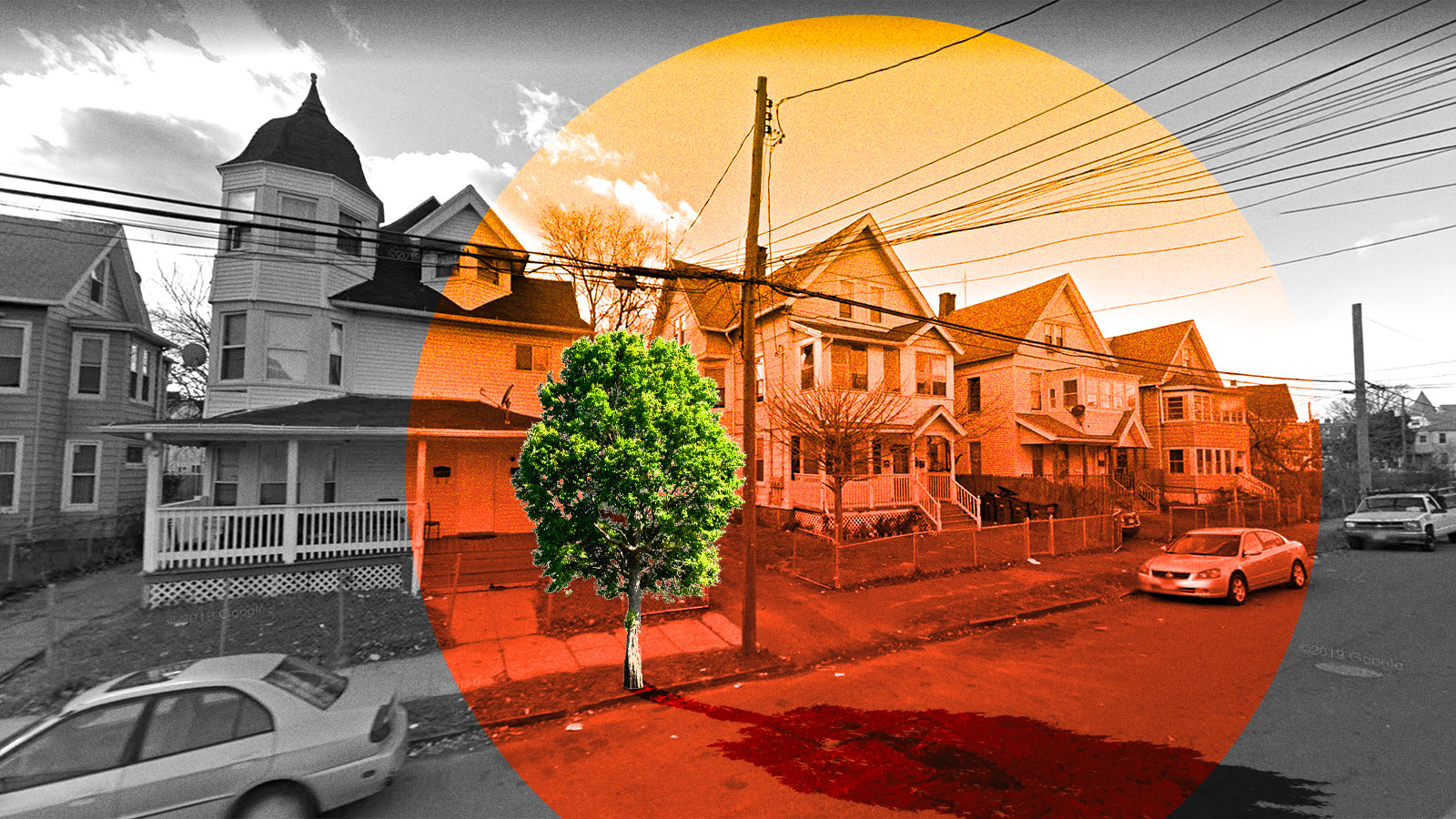The amount of greenery on your street depends on the amount of green in your pockets, according to a new study.
You’d have hard luck trying to convince someone that trees are somehow biased. Their sprawling roots, awning-like leaves, and huggable trunks offer protection and solace to everybody and everything, big and small. For humans, they help clean our air and water, and offer cover in the summer from blistering heat.
But a new study published in the journal PLOS ONE shows that their distribution often depends on race and class, a result of exclusionary zoning laws, racial segregation, and the country’s stark wealth inequality.
In the two-year-long study, a team of researchers from the Nature Conservancy found that 92 percent of low-income blocks in the U.S. have less tree cover and hotter average temperatures than high-income blocks. The inequality is most rampant in the Northeast, with some low-income blocks in urban areas having 30 percent less tree cover and average temperatures 4 degrees Celsius higher than high-income blocks. Five of the ten worst discrepancies are found in Connecticut, home to the most economically unequal metropolitan area in the country and known to be one of the most residentially segregated states in America.
When it comes to tree cover, the biggest disparity in the country is found in the metro area of Bridgeport, Connecticut — the metropolitan area with the greatest income inequality. Rob McDonald, lead scientist at the Nature Conservancy, said that’s no coincidence. The poorest blocks in the area have 54 percent less tree cover and are 5 Celsius hotter on average. “For the most part, income inequality will always correlate with other major health, environmental, and social inequities,” McDonald told Grist.
In Connecticut, roughly 90 percent of housing tracts are zoned for single-family homes, which combined with policies that barred people of color in the state from owning certain homes and even living in certain public housing projects, has kept many areas segregated by class and race. “Bridgeport is a perfect example of the issue we were trying to highlight,” McDonald said. “It is a product of exclusionary zoning which has reinforced a pattern of inequality forcing poor people into dense areas.”
Across the country, low-income neighborhoods had 62 million fewer trees than comparable high-income neighborhoods. On average, tree cover was 15 percent less for low-income blocks compared to high-income ones, which resulted in those low-income blocks having an average temperature that was hotter by 1.5 Celsius. The study, which examined the amount of tree cover in the 100 largest urban areas in the country, home to more than 5,700 communities and 167 million people, is the first-ever national survey of tree cover and temperature inequality — and it showed exactly what the authors expected.
“We knew this inequality existed but we wanted to see the whole picture because we know heatwave events are getting more frequent and more intense,” said McDonald. “So understanding which neighborhoods are more vulnerable is the first part of harm reduction planning.”
The research, McDonald says, was meant to explain how past economic and social policies continue to permeate even unexpected aspects of American life. Historically racist policies have made homeownership and economic mobility less attainable for Black and Latino people forcing them into heavily polluted and more densely populated neighborhoods — and made them much more unlikely to have generational wealth. Gaps in ownership also correlate to tree cover inequality, McDonald said, because people owning private land have the power and ability to plant more trees on their property. Other cities with large tree cover gaps include Baltimore, home to a huge homeownership gap and relentless heatwaves, and Boston, which has served as a flashpoint for residential desegregation for decades.
Beyond reversing the economic impacts of discriminatory housing policies, a more equal distribution of trees could help revitalize neighborhoods. The research suggests that a $17.6 billion investment in tree planting and natural regeneration could correct these disparities and benefit 42 million people by protecting them from heatwaves — shown to cause the most harm to poor people of color — and lowering air pollution levels while improving both physical and mental health.
“There are many problems facing the US, so I’m not going to pretend like tree cover is the most important problem,” McDonald said. “But it relates to all these conversations about climate adaptation, climate change risks, and also health outcome and income inequalities that we’ve seen play a big role during the pandemic.”
“As the US is starting to talk more seriously from a policy perspective about climate change, we have to think about adaptation and also think about how inequality amplified climate risk, starting with the nature in our backyards,” he added.




